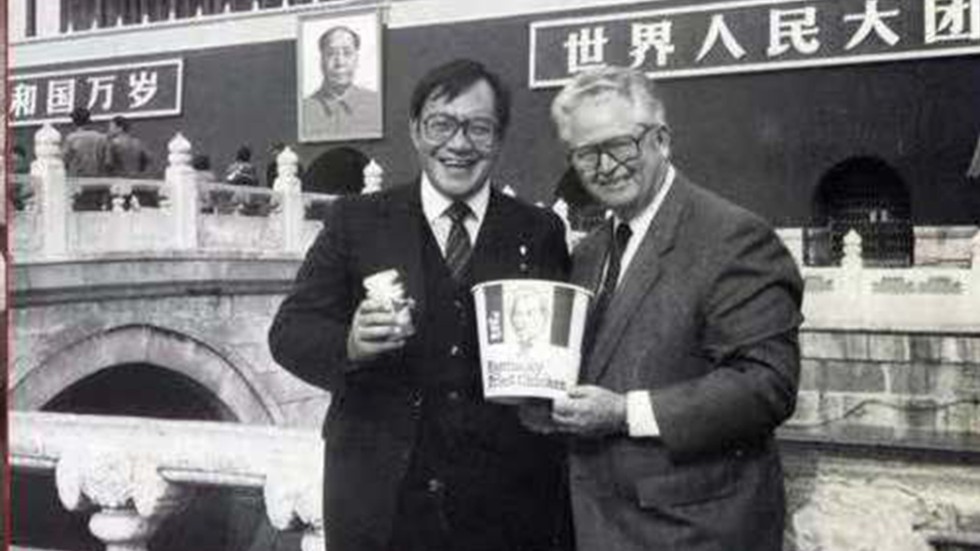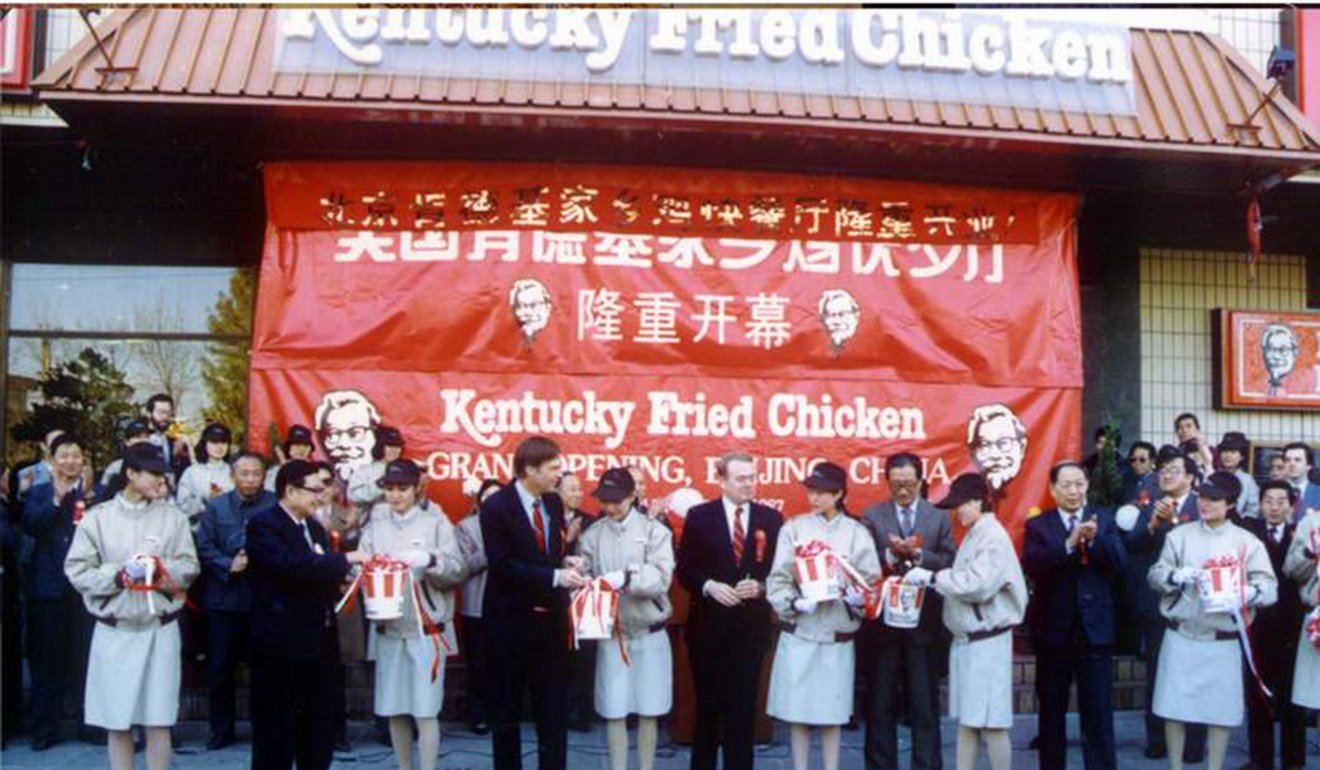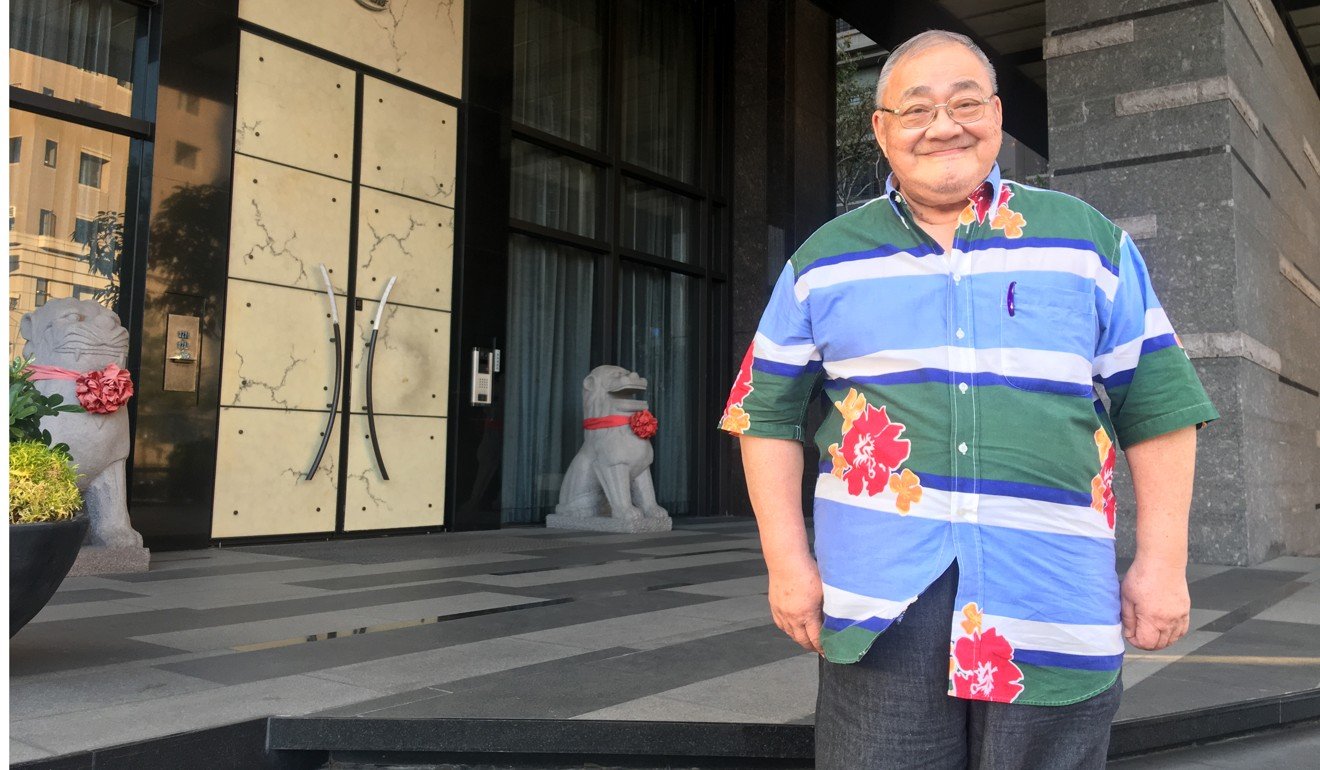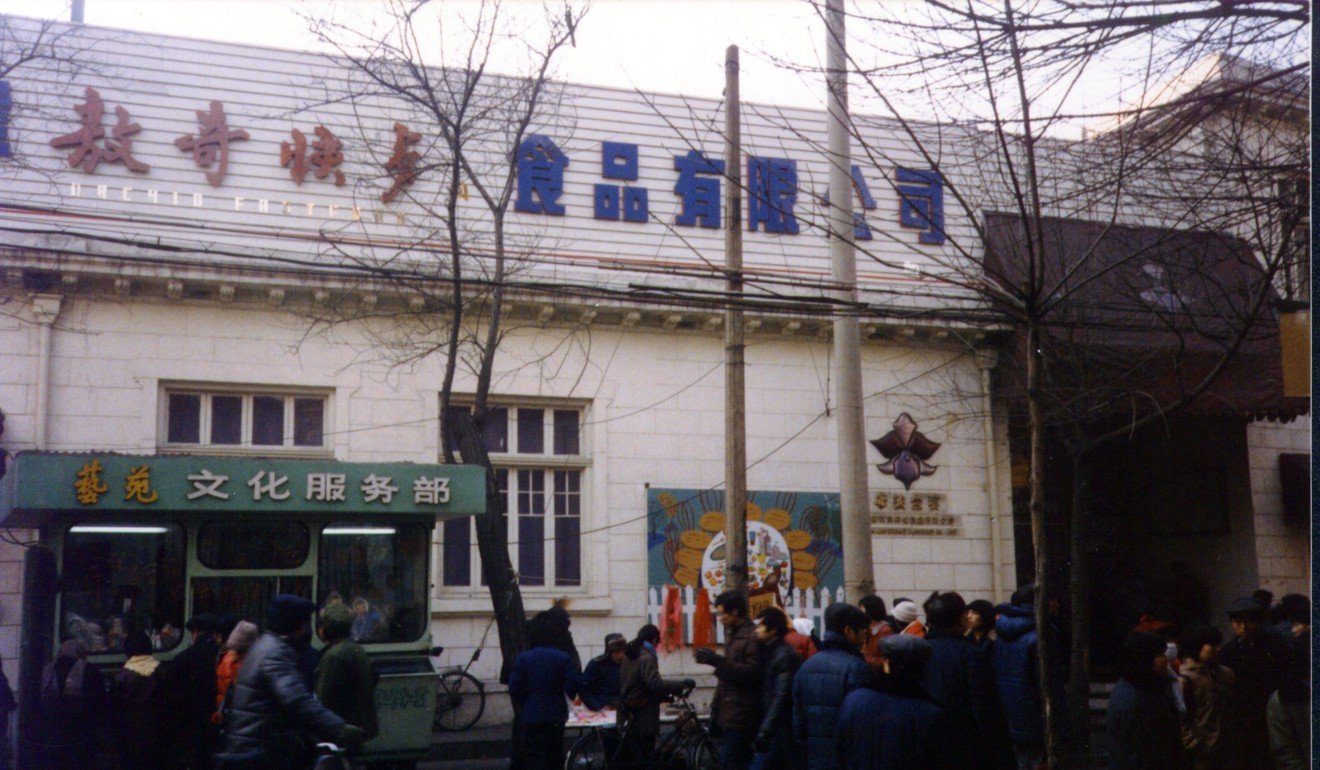The KFC China story: how Taiwanese businessman Tony Wang Tatung introduced a nation to fast food, and why there are no Chinese franchises overseas
When KFC opened in Beijing in 1987, it was the first US fast food outlet in any communist country
Tony Wang, who led the project, introduced new concepts, including hygiene and the art of queuing
PUBLISHED : Tuesday, 18 December, 2018, 8:17pm
UPDATED : Wednesday, 19 December, 2018, 8:55pm
Elaine Yau
https://www.facebook.com/elaine.yau.3152
https://www.weibo.com/u/6450432252

It was a chilly November day in 1987 when an animated crowd gathered outside a new shopping centre a stone’s throw from Beijing’s Tiananmen Square.
Members of the international press corps and curious locals braved the blistering cold to witness a historic moment that would have had Chairman Mao Zedong spinning in his nearby mausoleum – the opening of a three-storey Kentucky Fried Chicken restaurant.
Will KFC plastics move catch on at all Hong Kong fast-food chains?
That was three years before McDonald’s entered the country. It was four years before the fall of the Berlin Wall and the dissolution of the Soviet Union, and the American fast-food joint – with its white-haired Colonel Sanders sign and racks of golden fried chicken – was a first not only for China but for the whole communist bloc.
“On the opening day, 20 to 30 reporters followed me around wherever I went,” says Tony Wang Tatung, who led the venture.

The 1987 opening of the first KFC in Beijing. It was also the first US fast-food outlet in China and any communist country.
The restaurant sent ripples through the country’s catering industry, says Wang, who bears an uncanny resemblance to the colonel when he smiles.
“The Beijing Evening News ran an article saying the toilet … was cleaner than the pond in a Chinese restaurant,” he says from his home in the Taiwanese city of Taichung.
“The opening of that first KFC in China affected food safety and hygiene in the country’s catering operations, and introduced more civilised concepts such as queuing for food.”
The restaurant was an immediate hit, with a two kilometre queue outside in the days after it opened, Wang says.

Today, KFC is the most popular US fast-food franchise in China. Photo: Alamy
“They came to KFC not so much for the chicken, but to experience a bit of Americana. People were curious about the American lifestyle. The shop did brisk business and KFC recouped its investment within a year of opening.”
The appeal has been enduring: today, KFC is the most popular American fast-food operation in China, with more than 5,000 outlets. Since 2016 the licensee of KFC in China has been Yum China, a listed company in which Ant Financial Services, an affiliate of Alibaba, owner of the South China Morning Post, is a minority investor.
Born in China’s Sichuan province, Wang’s family relocated to Taiwan in 1949, when he was five years old, following the Chinese civil war. He graduated from Taiwan Chung Yuan Christian University in 1968 with a civil engineering degree, and completed a master’s degree in management science at Stevens Institute of Technology in New Jersey in 1973.
After a short stint working in pharmaceuticals marketing in New Jersey, Wang was headhunted by KFC in 1975 to work as a business analyst at its headquarters in Louisville, Kentucky.

Wang has made his money by opening franchises, expanding them and then selling them. Photo: Elaine Yau
With dreams of becoming an entrepreneur, he left KFC in 1980, and the following year met then Tianjin city mayor Li Ruihuan – who was later elevated to China’s powerful Politburo Standing Committee – when he was visiting San Francisco with a delegation.
“He asked me to teach them how to start a fast-food business in China. I went to Tianjin and saw there was good potential, [but] it was a risky decision because it was uncharted waters,” he says.
In 1982, with Singaporean and Chinese partners, Wang opened Orchid Food in the city, serving hamburgers and sandwiches.
“Me and my Singaporean partner put in US$300,000 for the venture. The decor was very basic. We opened a second Orchid at Tianjin Water Park 10 months later,” he says.

Wang opened Orchid Food in Tianjin in 1982. It sold burgers and sandwiches.
Its interest piqued by Wang’s success with Orchid, KFC came knocking on his door again in 1986, offering him the position of vice-president for Southeast Asia and China operations. Wang took the bait and sold his share in Orchid.
KFC had already established a foothold in Southeast Asia in the early 1980s, with chains in Singapore, Indonesia, Malaysia and Thailand, as well as in Hong Kong. But the company was stumped when it came to communist China.
“Richard Mayer, who was then KFC’s board chairman, was eager to enter the China market. They had a China division based in Hong Kong, and hired a South African head of China development. They worked on [expanding into China] for many years to no avail. The South African couldn’t even get a visa for China,” Wang says.
At the time, the Hong Kong and Singapore KFC chains were run by franchisees. The company bought back half of the franchise in Singapore – where residents had a better grasp of Mandarin than Hongkongers at the time – and Wang led the China drive from the Singapore office.








 Reply With Quote
Reply With Quote